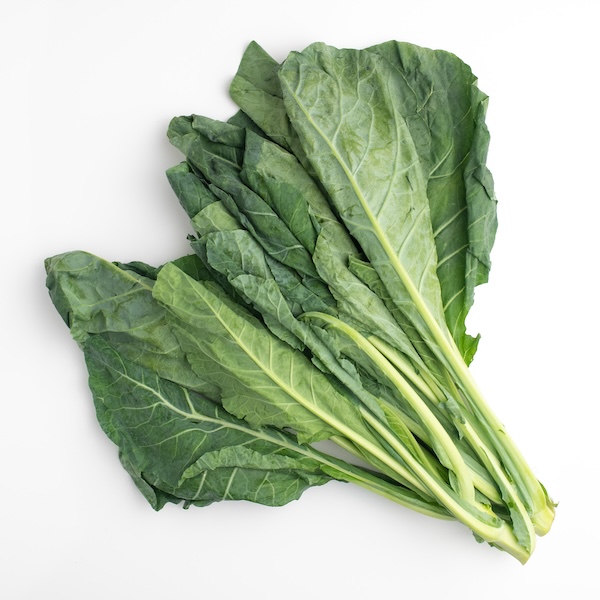collard greens

Collard greens are large, leafy vegetables from the brassica family, related to cabbage, kale, and broccoli. Fun fact: Collards have deep roots in Southern U.S. cuisine and African food traditions and are often seen as a symbol of strength and resilience.
Why is it good for my body?
Collards are rich in vitamins A, C, and K, along with calcium and fiber, supporting bone health, immunity, and digestion. They're also packed with antioxidants that help fight inflammation and support overall wellness.
Where does it come from?
Collard greens originated in the Mediterranean region and were later brought to the Americas by African and European settlers. Over time, they became a staple in Southern cooking, especially in African-American communities.
What season is it fresh?
Collards grow best in cooler months and are typically in season from late fall through early spring. Their flavor actually sweetens after the first frost, making them especially tasty in winter.
How do I store and handle it?
Store collard greens unwashed in a loose plastic bag in the fridge for up to a week. Wash thoroughly before use, as the leaves can hold onto dirt and grit.
What are ways to eat it?
Collards can be enjoyed sautéed, braised, steamed, or even chopped raw into salads. For a nutrient-packed dish, try them sautéed with garlic and olive oil or slow-cooked with broth and spices—light cooking helps reduce bitterness while keeping nutrients intact.
How do I introduce it to first-time tasters?
Start with thinly sliced collards sautéed with olive oil, garlic, and a splash of lemon or vinegar to brighten the flavor. You can also blend them into soups, mix into stir-fries, or toss into smoothies to ease into the taste and texture.
Found in the Produce section
Recipes
https://recipes.doctoryum.org/en/foods/collard-greens
